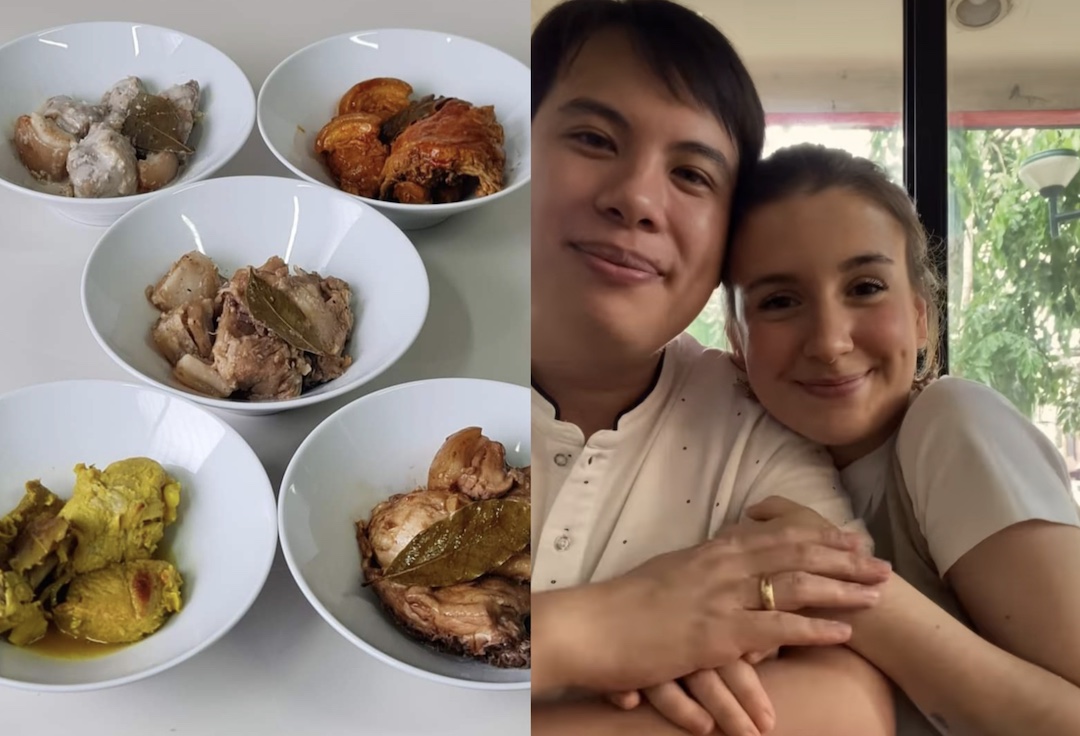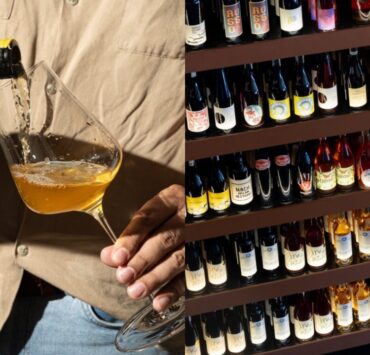To the average Juan, most of our cultural heritage is a mystery. Beyond the walls of the classroom (and the occasional news cycle), the ways of our ancestors aren’t within the reach of everyday Filipinos. A TikTok account is slowly changing things, though. At least when it comes to what went into our ancestors’ stomachs.
@thelostfilipinocookbook There is no proper definition of what Filipino cuisine is all about. So… why not rediscover it together? Kain na! 🍲 #thelostfilipinocookbook #foryou #fyp #pinoy #pinoytiktok #heirloomrecipes #filipinofood #foodhistory #historyofthephilippines🇵🇭 #culture
♬ sonido original – The Lost Filipino Cookbook
The Lost Filipino Cookbook is a TikTok account dedicated to uncovering the culinary mysteries of our forefathers. The TikTok features real-life married couple Beatriz Gomez and Roberto Villarcabral as they play chef, historian, and detective in an attempt to unearth the history behind our favorite Filipino dishes—while also rediscovering forgotten heirloom recipes.
Complementary histories
Gomez and Villarcabral met through a mutual friend years ago. As luck would have it, the thing that bound them together was the same thing that they both had a deep history with: food. Ever since their childhood years, food had been a major influence—or at least a budding curiosity.
“I grew up with my mom cooking very hearty meals every day. Very simple meals—Spanish food always,” Gomez told Nolisoli.ph.
“I was always fascinated with how my Mom would always do so many things at the same time, as well. Cooking these [dishes] while she’s cooking this one, and timing with this other thing. I would be fascinated by that; how she would really manage the kitchen by herself.”
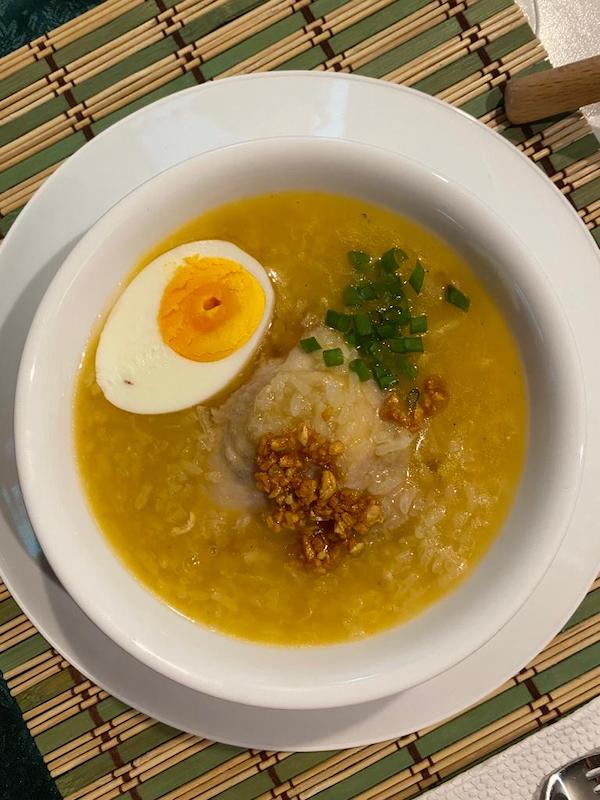
But Gomez’s infatuation with food didn’t turn into a love affair until it was time for her to decide what to pursue in university.
“I found this course which is food science. People didn’t give it much importance—or in Spain at least at that time. I looked at their program and thought ‘Hey! I’ve always been interested in trying to make a difference in the world—like trying to provide something for everyone, and not just the ones who can afford it. Maybe if I get into this field, I can make a difference,” she said.
After her spark for food turned into a full-blown flame, Gomez graduated with a degree in food science, specializing in dairy products and probiotics.
While Gomez was spending time in the kitchen with her mother, a young Villarcabral was a kid curious about how food was made.
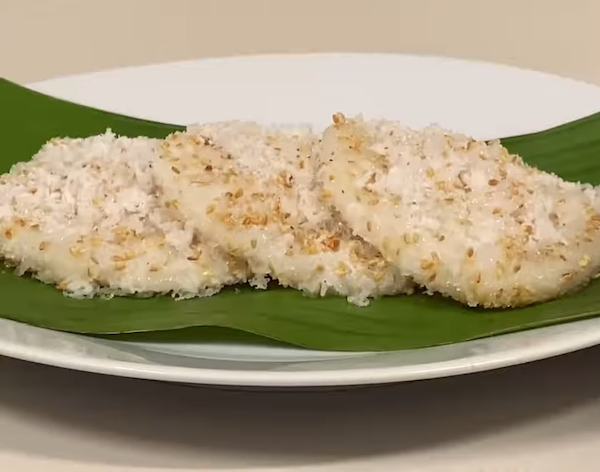
“One of my biggest memories [about food] from [my childhood] was when we went to the Kraft factory in Parañaque. It’s not there anymore, I think they changed tenants. [I]t was so cool seeing how they made Cheez Whiz. And it evolved into me starting to cook food,” said Villarcabral.
His love for food turned into a desire to be a chef, but his social conscience prompted him to pursue another path. For university, he decided to pursue a degree in mass communications specializing in film direction to spread his message of social awareness. After working in media for a year and then realizing it wasn’t the right fit, Villarcabral returned to his first love: food.
And his first love led him straight to Gomez.
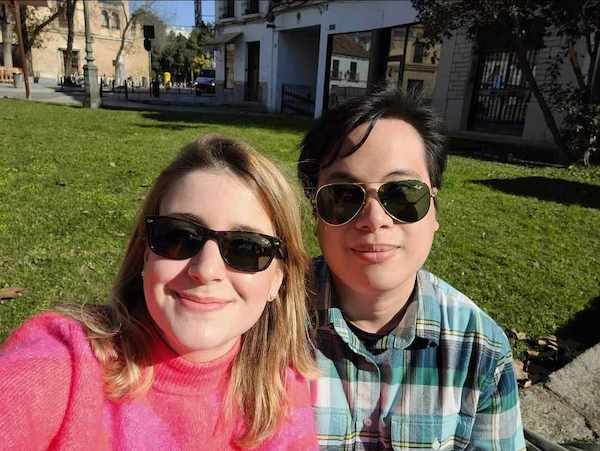
“I met Bea at a food event and realized that she also had the same things in mind. Like I said, we clicked; then from there, we married after doing long distance for three years and we were able to marry all these other aspects of ours to what would become the [The Lost Filipino Cookbook].”
The mango that started it all—kind of
The story behind The Lost Filipino Cookbook’s first video is a fortuitous mix of underlying intention and perfect timing. Gomez and Villarcabral have been planning to make videos for a while, but the opportunity to do so (thanks to busy schedules and life) never came up.
It wasn’t until a serendipitous visit to the market that the couple decided to really give it a go. After walking around the stalls and taking in the sights, they found a vendor selling paho—a variety of mango endemic to the Philippines.
@thelostfilipinocookbook Reviving this recipe of ✨🥭 BURONG PAHO 🥭✨, the antiquated Filipino analogue for brined Spanish green olives. Ingredients: – 350 grams paho (Magnifera altissima) – 35 grams salt – Water, enough to fill up the jar #fyp #foryou #LutongPinoyRecipe #filipinofood #filipinotiktok #culture #pinoytiktok ♬ Vals Poético (feat. Los Macorinos) (Instrumental) – Natalia Lafourcade
After seeing the mango, Villarcabral told Gomez, “You know what? I’m going to get [the mangoes] and I’m going to make a video of how these used to be brined when the Spaniards came and how they would use it as a substitute for their olives.”
Before they could post the video though, the question of what to call the channel had to be answered.
They knew that it had to be about heritage, lost traditions, and something related to cooking. After bouncing ideas off of one another, they came to the name “The Lost Filipino Cookbook” with the tagline “unearthing our ancestors’ way of living.”
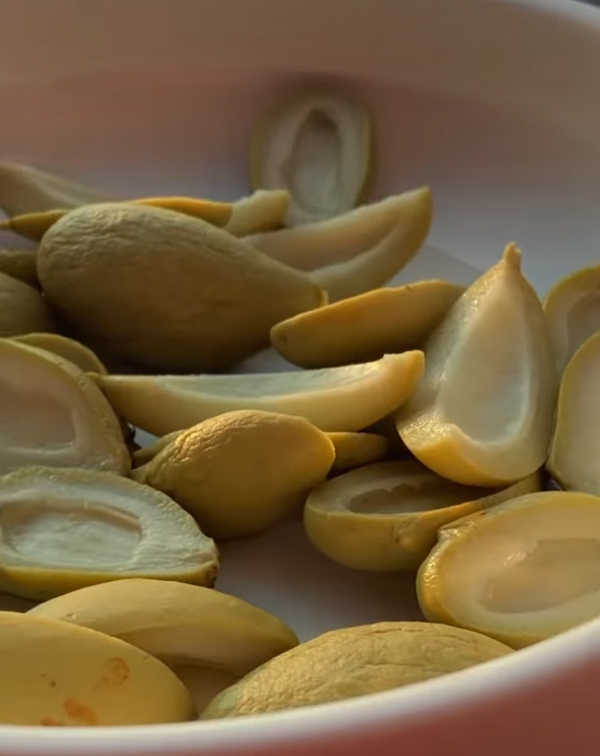
The first video on the TikTok account used the ingredient they found in the market that day. The resulting video was burong paho (brined paho) which garnered over 25,000 views and 1,473 likes to date. From then, they decided to take the time to produce more videos and cover more interesting topics.
Cultural and culinary detective work
With Villarcabral’s background as a culinarian and cultural worker, research for new recipes isn’t as arduous as it can sound. “Rob has a huge database in his brain of knowledge on history, dishes, and ingredients and it really amazes me. His knowledge already makes it very easy for us to go through our research because he already has the starting point,” explained Gomez.
The research doesn’t end there, though. History can be a fickle mistress, with facts changing after decades due to new discoveries and emerging research. Before pursuing an idea, they still have to check if the facts are still—well—facts, and make sure that nothing has changed.
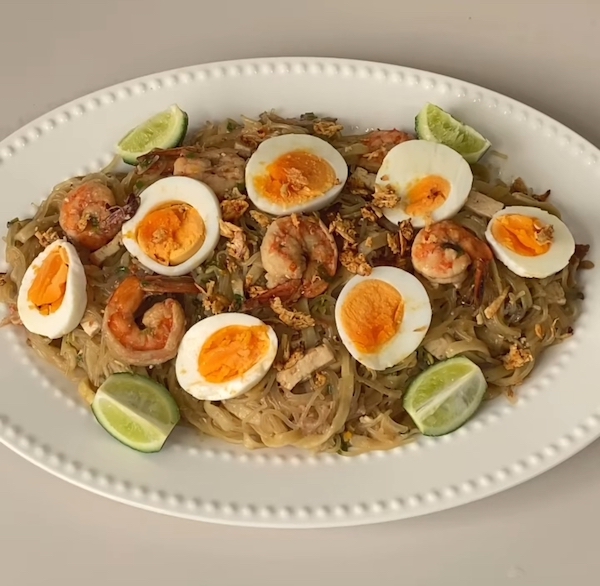
Research aside, a lot of work goes into each video. To prepare for the shoot, the couple has bi-monthly meetings where they do research, write the script, and find ways to source ingredients.
During these meetings, they also put their detective caps on and map out possibilities of the origins of these dishes. According to Villarcabral, it helps a lot that his wife’s home country is Spain.
“When it comes to the Spanish connection in our cuisine and culture, I would turn to Bea and ask her, ‘What do you think could possibly be [the root of this dish]?’ Using her own wealth of knowledge, she’d go through [our theories] and tell me, ‘I’ve seen this in my country and perhaps maybe there would be an analog [version] to what you have here,’” he said.
@thelostfilipinocookbook Here is the splashing origin of everyone’s favourite #steak cubes. Kain na! 🥩 #TheLostFilipinoCookbook #Salpicao #FilipinoFood #Baguio #SaBaguio #Restaurant #fyp
♬ original sound – The Lost Filipino Cookbook
“We would come up with these theories, so it’s a very organic process for both of us, too. It makes us [feel] like a couple of detectives. Instead of uncovering the mysteries of crimes, we’re uncovering the mysteries of cuisine—which is really cool.”
When the meeting adjourns, though, that’s when the fun really begins.
And for this recipe, you’ll need resourcefulness
Admittedly, the chef of the pair is Villarcabral. In all of their videos, he’s the one that does the cooking. The work of editing videos—which often happens simultaneously as the shoot—falls squarely on Gomez’s shoulders. As for the script, the pair says it’s a team effort.
Before they can get any cooking or shooting done, though, sourcing ingredients comes first. Availability of ingredients is where a lot of the pressure lies. Recipes from the turn of the century don’t always include ingredients you can find at grocery stores—which means ingenuity and resourcefulness are two things that come into play.
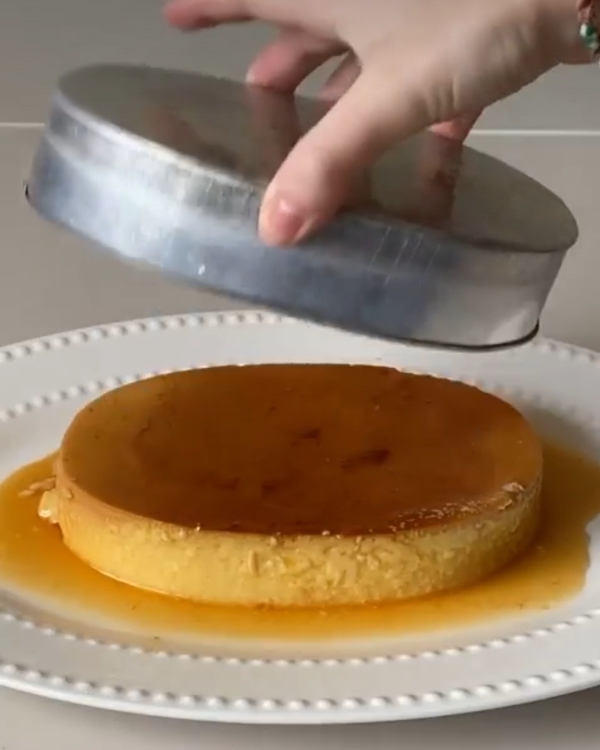
“If we have the majority of ingredients and we only have one that is unavailable, we usually just go ahead with it and either opt out that ingredient or replace it with something similar,” Villarcabral revealed.
“When we did the kare-kare clip, we followed a recipe from 1916; and everything you saw in that clip was all there. All the ingredients were there, except for bataw. And we couldn’t find it then; so we replaced it with sigarilyas, which is the closest thing we could use at that moment,” he continued.
As surprising as it is, the couple doesn’t actually have to go very far to find the ingredients they need to cook up a storm.
“We actually take trips to the market every week, which we really enjoy,” Gomez mentioned.
But for the ultra-rare ingredients (like dayap, a once common citrus fruit), their TikTok following of over 40,000 sometimes lends a hand.
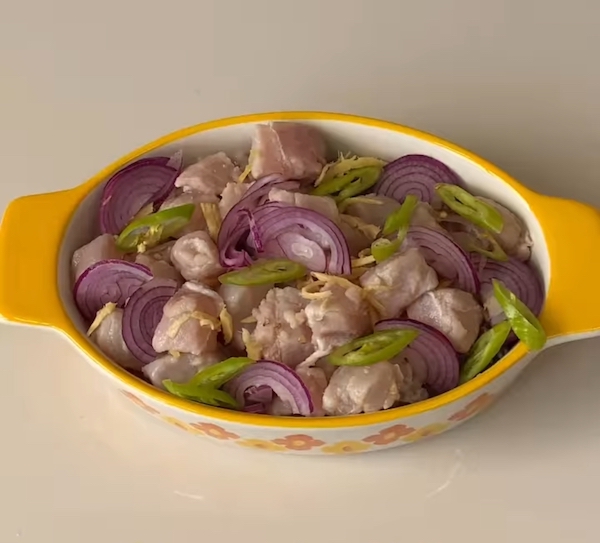
“There’s one [follower] in particular—Melody, she’s so nice. She opened the doors to her house for us to get dayap. That’s why for the next few videos, we were able to showcase [it]. It’s a very rare ingredient now, so we wouldn’t have done it without Melody,” she added.
Lights, camera… Kainan na!
As fun as it sounds to cook for an audience, there are many many challenges that come with it. Their most ambitious video—and my personal favorite—was the five kinds of adobo they released on Independence Day.
Initially, they were just going to show the original adobo, which is adobong puti. But taking into consideration the variety of adobo out there (which is also a reflection of our culture, Villarcabral noted), they decided to shoot five variations.
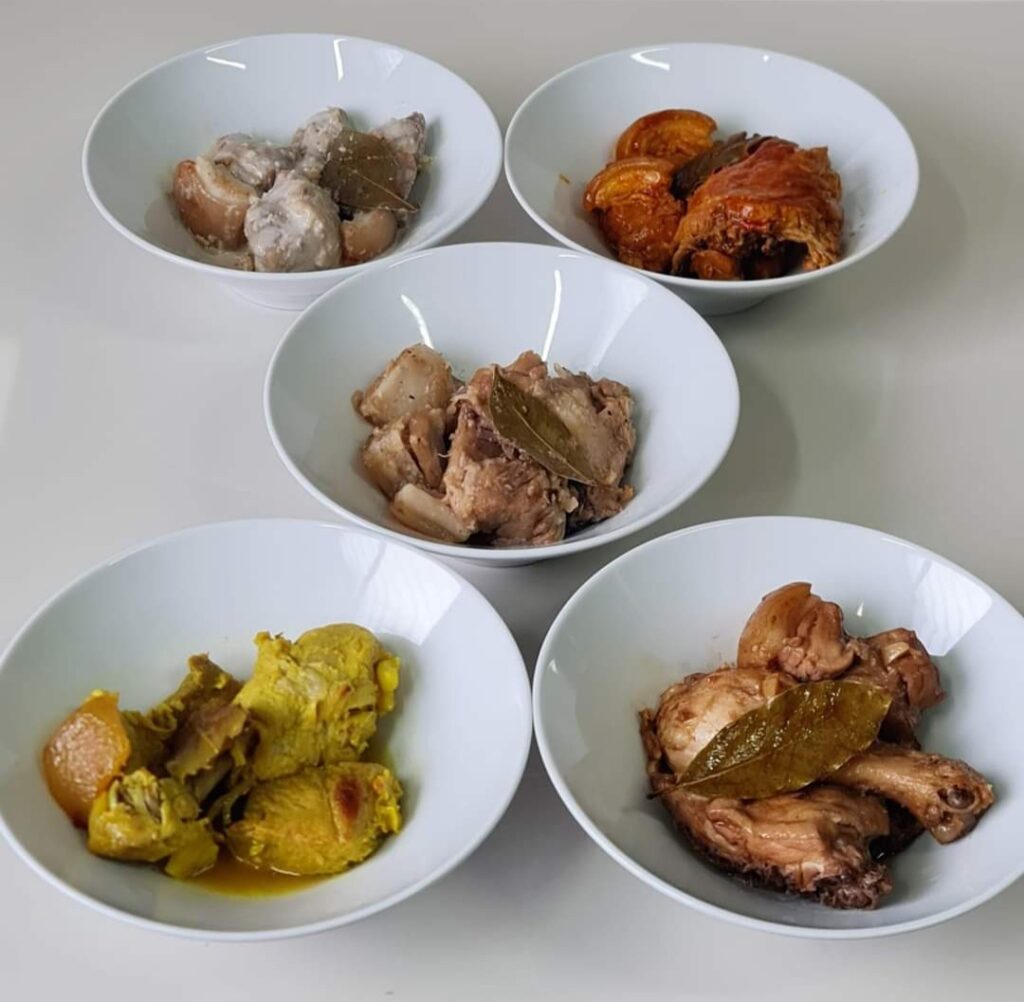
The hiccup in this shoot, though, came in the form of a power outage.
“I was just so overwhelmed because we had a power outage that same day [we shot the video]. It was making everything so complicated. [And we ended up] cooking overnight. It was so hard,” Gomez confessed.
“But then in the end, we were able to soldier through and make it work! And the result is the video that you see today. A presentation that is very inspiring to our fellow countrymen and countrywomen. And it’s nice because the hard work that we put in that video was appreciated in the end,” said Villarcabral.
“It was very gratifying to see something so ambitious in scope [and how we were] able to make it [happen],” he added.
For each other, the future, and the culture
Creating something of worth is a big achievement, and sharing it with your spouse can make it feel even better.
“It’s very exciting because it’s been a long time since we’ve been away from each other. And now, we get to tread on this adventure together. And learning about one culture individually and collectively makes it really wonderful,” said Villarcabral.
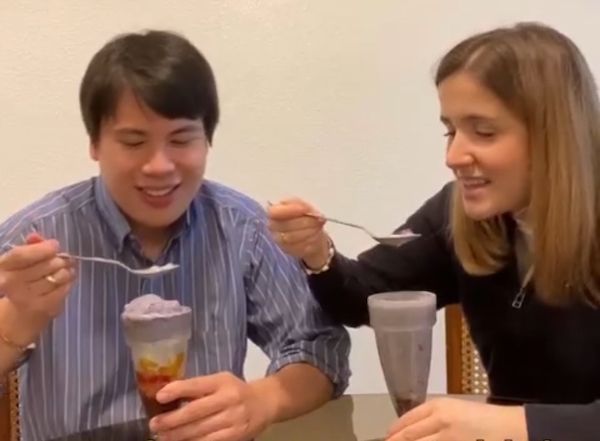
“Since we started this channel, we can both look back and think that we both have grown so much. As a couple, individually; as professionals in this field now. It’s been a great journey. And it’s still a great, great journey. We’re so happy to have chosen to finally start,” added Gomez.
For someone who grew up in Spain, the journey of discovering Filipino food—and by extension—our culture, has been an important one for Gomez.
“It’s been very enriching, culturally. And I tell Rob, the day we have kids, it would be so great for them to grow up embracing both [Filipino and Spanish] cultures. And for me, the best way of really portraying that to our kids is by embracing the culture where I’m living now,” she said.

Educating and raising cultural awareness and fostering a deeper love of country is also something The Lost Filipino Cookbook tries to do with every video.
“We wanted to inspire aspiring chefs that are going to specialize in Filipino cuisine by thinking outside the box,” Villarcabral mentioned.
But thanks to their content, the couple’s impact doesn’t just affect aspiring chefs. The creativity and thoughtfulness (as well as all that research) that goes into their cooking has the power to inspire people who aren’t even interested in cooking.
By combining interesting aspects of our history—as well as stellar editing, writing, and a contagious passion for food—The Lost Filipino Cookbook makes learning about our food heritage accessible to everyone with an internet connection.
Not to mention, it’s honestly a great way to make the most of the hours you’re probably already spending on TikTok. All while learning a new thing or two.


